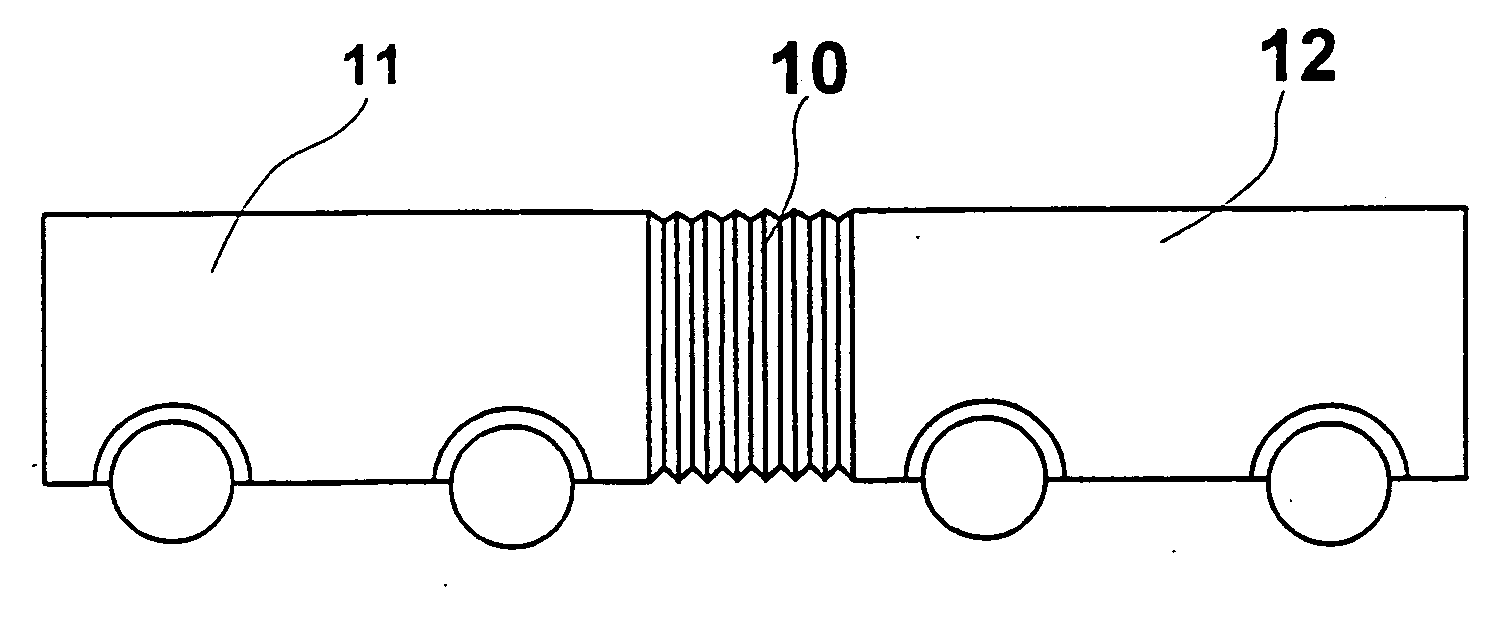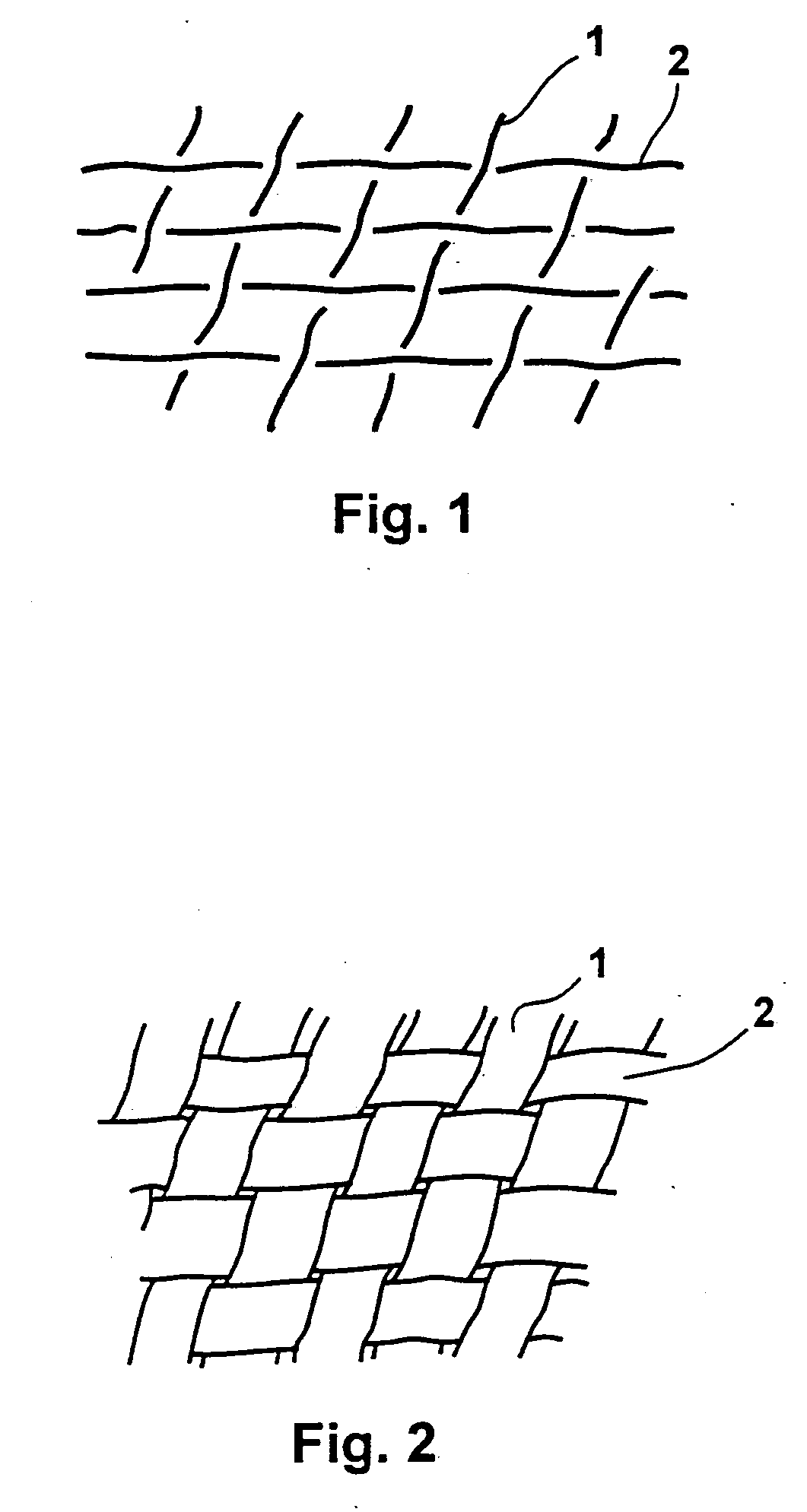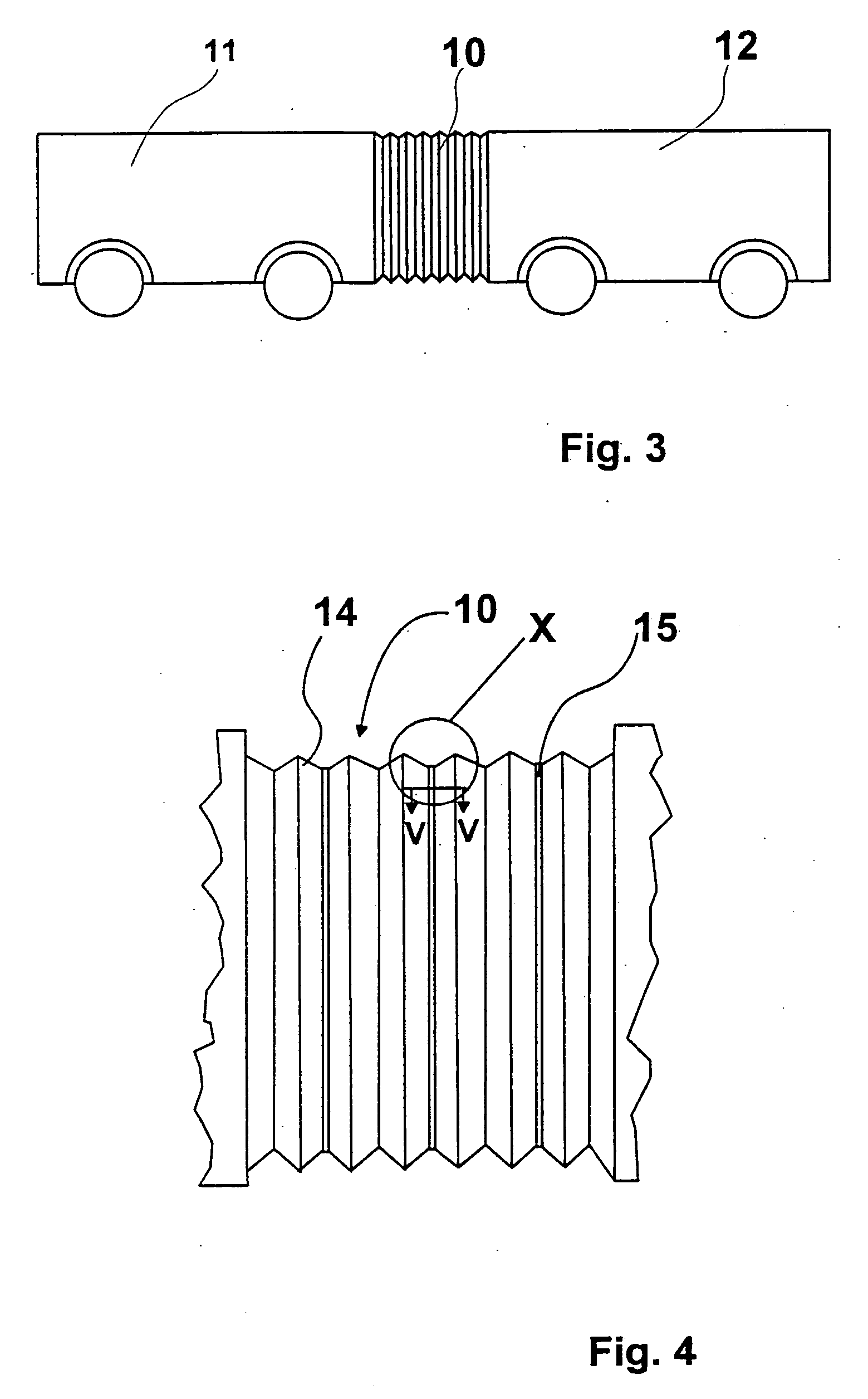Fabric layer of a bellows
- Summary
- Abstract
- Description
- Claims
- Application Information
AI Technical Summary
Benefits of technology
Problems solved by technology
Method used
Image
Examples
Embodiment Construction
[0022] The fabric consists of weft threads 1 and of warp threads 2. Such kind of fabric is well known and needs not be discussed in further detail herein.
[0023] There is always a certain distance between the successive weft threads and the warp threads as well even if the weft threads are pushed into place by the reed. This is where the invention comes in. If now the warp and the weft threads are made wider by pressing the fabric, the apertures existing between the weft threads and the warp threads are compulsorily minimized or even eliminated when a direct connection between the threads is achieved. As a result of the plastic deformation of the fabric, the stiffness of the fabric as such is increased as already discussed herein above. The reason therefore substantially is that the spaces between weft and warp are eliminated. By coating a fabric manufactured in this way with a plastic layer on it inner as well as on its outer side, the fabric is not only protected from environmenta...
PUM
| Property | Measurement | Unit |
|---|---|---|
| Force | aaaaa | aaaaa |
| Deformation enthalpy | aaaaa | aaaaa |
Abstract
Description
Claims
Application Information
 Login to view more
Login to view more - R&D Engineer
- R&D Manager
- IP Professional
- Industry Leading Data Capabilities
- Powerful AI technology
- Patent DNA Extraction
Browse by: Latest US Patents, China's latest patents, Technical Efficacy Thesaurus, Application Domain, Technology Topic.
© 2024 PatSnap. All rights reserved.Legal|Privacy policy|Modern Slavery Act Transparency Statement|Sitemap



